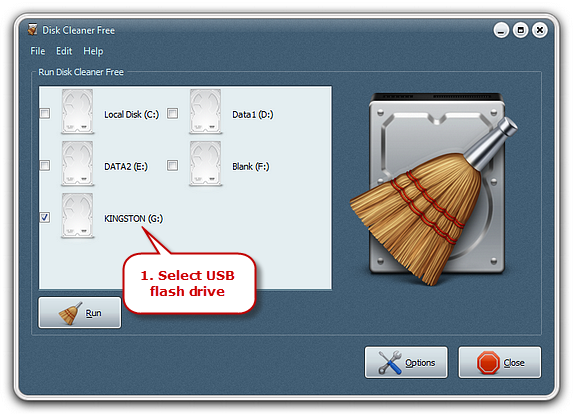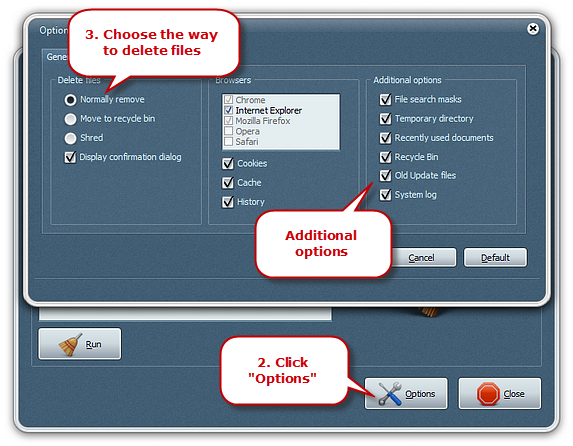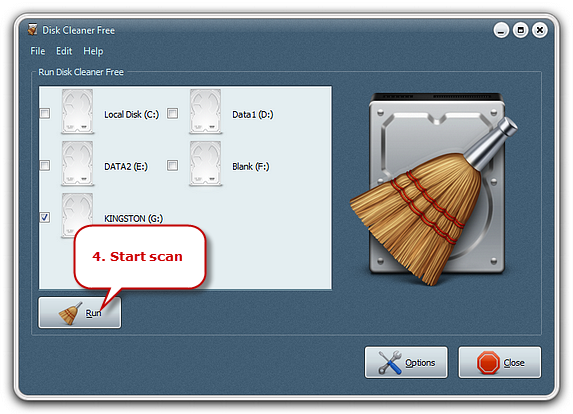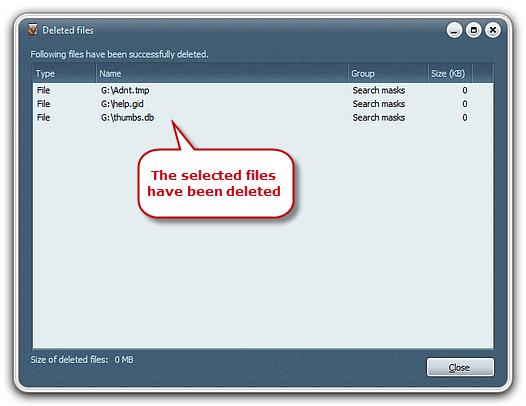Introduction
USB flash drives are great for storing private data or transferring files between computers. While manual deleting on the drive will clear the files off the device some residual information remains. The proper way to clear it is to use Disk Cleaner Free which will help you remove the data and clean up residual information as well.
Step 1. Choose USB Flash Drive
Insert your USB flash drive into your computer and launch Disk Cleaner Free. You’ll find a list of hard disks in your computer, including the USB flash drive that is connected. Check it for cleaning.

Step 2. Set Cleaning Options
Click “Options” to set how the cleaner runs. In “General” tab, you can decide how you want the junk files dealt with:
Normally remove – the deleted files does not go into Recycle Bin and gets wiped away from your hard drive. It is just like the way you use Shift + Deleteto remove the files. Actually, it does still leave traces but they are just a little harder to find. Some recover tools may be able to recover them.
Move to recycle bin – move the useless files to recycle bin. It is a safer choice in case some errors occur after cleanup. You can restore the deleted files.
Shred – overwrite files with random data and erase them to make sure the files are permanently gone. The is useful when you need to delete some stubborn files or need to protect your privacy and eliminate the possibility that someone might see or recover them.
Check “Display confirmation dialog” if you want to confirm whether to delete the file or not.
The “Browsers” section has a list of all your browsers installed in your computer such as Internet Explorer, Google Chrome, Mozilla Firefox, Opera, Safari, and so on. Check the browsers needed to be cleaned. Then you can choose to include or exclude items like cookies, cache and history from the cleaning process.

Temporary directory – empty all the temporary directories
Recently used documents – remove the history of recently used documents
Recycle bin – empty the recycle bin
Old update files – remove Windows update source files (make sure that all patches have already been installed before you do this)
System log – delete system log files

Step 3. Start Cleaning
Click “Run” and the program will scan your selected hard disks and list all the files that need to be deleted.



